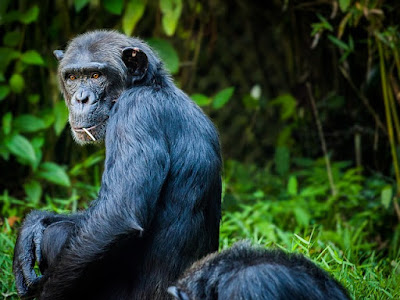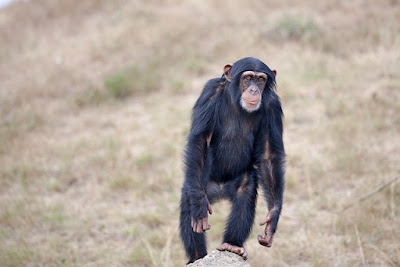Interesting Facts About Our Closest Relatives: Chimpanzees
Chimpanzees, scientifically known as pan troglodytes, are among the most adorable creatures on earth. As our closest living relatives, they share approximately 98% of their DNA with humans, making them an essential subject for scientific study and a source of awe and curiosity for many. These highly intelligent and social creatures have attracted the attention of researchers, conservationists and nature lovers alike. In this article, we'll explore some of the fascinating aspects of chimpanzees, highlighting their behavior, intelligence, and conservation status.
Physical characteristics
Chimpanzees are great apes, belonging to the Hominidae family. They exhibit a strong and muscular build, adapted to life in the dense forests of central and western Africa. On average, they stand about 3 to 4.6 feet tall and weigh between 70 and 130 pounds. His body is covered with thick black hair, except for his face, palms, and soles, which are bare and flesh-colored.
Use of intelligence and equipment
One of the most amazing qualities of chimpanzees is their extraordinary intelligence. These primates are known for their ability to use tools, a trait once thought to be uniquely human. They have been observed using sticks to extract termites from mounds and using stones as hammers to crack nuts. This type of tool use demonstrates their cognitive abilities and problem-solving skills.
In addition, chimpanzees have a remarkable ability to learn and communicate. They communicate using vocalizations, gestures, and facial expressions, forming complex social bonds within their communities.
Social structure
Chimpanzees live in complex social groups called communities. These communities are typically led by an alpha male, who asserts his dominance over other males and establishes his status through displays of strength and alliances. Within the community, females form close relationships, often supporting and caring for each other's offspring.
Communication and culture
Chimpanzees have demonstrated a rudimentary form of culture. This means that certain behaviors, such as tool use or specific hunting techniques, can be passed from one generation to the next through observation and imitation. Cultural differences have been observed between different chimpanzee communities, which highlights the diversity within their species.
Threats and Protection
Despite their remarkable intelligence and close genetic relationship with humans, chimpanzees face many threats to their existence. Habitat destruction due to deforestation, poaching and disease transmission from humans are some of the most important challenges they face. Additionally, the illegal pet trade has contributed to their population decline.
Efforts to conserve chimpanzees have been made by various organizations and governments. Establishing protected areas and raising awareness of the importance of their conservation are important steps in ensuring their survival.
Chimpanzees continue to amaze us with their intelligence, social complexities and similarities to humans. As we delve deeper into their world, we gain a greater understanding of the evolutionary history of our species and the importance of conserving these magnificent creatures. By protecting their habitats and ensuring their well-being, we not only protect chimpanzees' future but also preserve an important part of our natural heritage. Let us accept the responsibility of coexistence with our closest relatives and appreciate the beauty of the rich tapestry of life that includes both humans and chimpanzees.
Here are 20 interesting facts about chimpanzees:
- Closest living relatives: Chimpanzees are our closest living relatives, sharing about 98-99% of their DNA with humans.
- Scientific name: Chimpanzee belongs to the species "Pan". It has two species: Pan troglodytes (common chimpanzee) and Pan paniscus (bonobo).
- Habitat: Chimpanzees are native to the forests and woodlands of central and western Africa.
- Social Structure: They live in complex social communities, forming strong bonds with family members and mates.
- Tool use: Chimpanzees are skilled tool users, using sticks to extract insects from nests or leaves as sponges to drink water.
- Problem-solving abilities: He has demonstrated impressive problem-solving skills, even using tools to get to hard-to-reach food.
- Communication: Chimpanzees communicate through a combination of vocalizations, gestures, and facial expressions.
- Self-awareness: Studies have shown that chimpanzees can recognize themselves in mirrors, which indicates self-awareness.
- Emotions: Chimpanzees exhibit a wide range of emotions, including happiness, anger, sadness, and empathy.
- Hunting: Some chimpanzee communities engage in cooperative hunting, where they work together to capture and share prey.
- Intelligence: They are considered to be one of the most intelligent animals on earth, capable of learning complex tasks and problem-solving.
- Grooming: Grooming plays an important role in social bonding among chimpanzees, helping to form and maintain relationships.
- Lifespan: In the wild, chimpanzees can live up to 40–50 years, while in captivity, they can live much longer.
- Reproduction: Female chimpanzees usually give birth to a single offspring after a gestation period of about 8 months.
- Playful nature: Young chimpanzees love to play and engage in activities such as wrestling, chasing, and swinging from branches.
- Communication over long distances: Chimpanzees use loud sounds known as "pants hoots" to communicate over long distances.
- Adaptability: They are highly adaptable to different environments and can survive in both dense forests and savannas.
- Vulnerability: Chimpanzee populations are declining due to habitat loss, poaching, and disease transmission from humans.
- Complex relationships: Chimpanzee communities have complex social hierarchies and social customs that vary between different groups.
- Cultural differences: Some behaviors, such as tool use and hunting techniques, may differ between different chimpanzee communities, indicating the presence of cultural differences between them.



Comments
Post a Comment